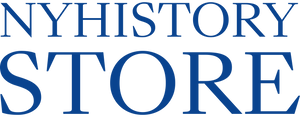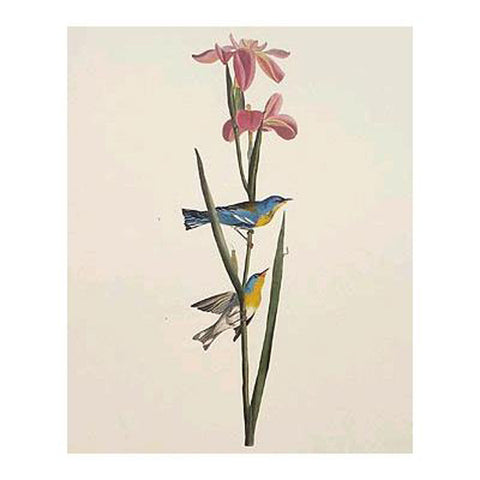Description
Northern Parula Warbler, Parula americana
Flora: red or copper iris, Iris fulva
Print size: 26 1/4" x 39 1/4"; image size: 11 1/2" x 18 1/2"
Princeton Audubon Limited Edition - produced 1985
Audubon's young assistant, Joseph Mason, painted the iris which Audubon called "Louisiana Flag."
Audubon wrote in his journal for March 26, 1821, that Joseph Mason had shot a male "Blue Yellow Back Warbler." On the following day Audubon painted both the warbler and its mate, she eyeing an inchworm.
The northern parula warbler is a grayish-blue bird with a distinctive yellowish-green patch on its back and a buzzing song that during breeding season has been described as a "sizzling trill." The name "parula," meaning a diminutive Parus or titmouse, was given this warbler because of its chickadee-like habit of foraging for food; poking, picking, and hanging on the underside of a limb. Moss is its characteristic nesting site. In the south, it is associated with woodlands where Spanish moss hangs from the trees; in other areas, where Usnea or beard moss is common.
EHJ
Princeton Audubon prints are direct-camera facsimile lithographs of the Robert Havell Jr. (1793-1878) engravings for The Birds of America (1827-38). Princeton's Double elephant Folio prints are issued in limited editions of 500 or 1500 prints. All are numbered and have a seal in the bottom margin to demonstrate their authenticity.
Printed on heavy Mohawk paper that is recommended by the Library of Congress for archives, the paper is specially toned to match the average paper color of the antique originals.
Item Number:
1705


